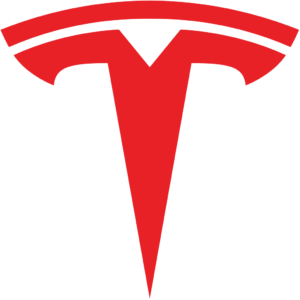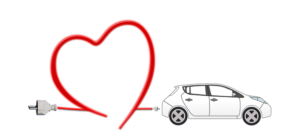**** Most Big Box store corporations like Wal-Mart, IKEA, Target, Costco, Sam’s Club and others have had programs underway for several years to put their massive store and distribution center rooftops and store parking lot areas to work as bases for solar power panels. A CleanTechnica May 3rd, 2020 article highlights IKEA’s efforts to do the same citing IKEA’s installation of 1 Million rooftop solar panels installed on 370 stores during 2019. In addition, IKEA also has built a total of 535 wind turbines and in 2019 acquired two solar parks. By the end of 2020, IKEA will be capable of generating more power than it consumes.
In some cases older buildings are not designed to withstand the added weight and wind load of rooftop solar panels, and/or they have too many A/C installations and building vents and the like that would need relocating to economically install a sufficient quantity of solar panels. Such was the case for Costco’s solar panel installation in their Kahului, Maui, Hawaii parking lot. Its solar panels will instead be installed on canopies over their parking lot. All well and good.
To date, however, most of these corporations are missing a customer satisfaction and revenue-producing opportunity to cover their parking lots with solar powered panels that power battery chargers for their customers’ electric powered vehicles. Store members would pay a price per kWh for their charging energy consumed, and the store could choose the rate they charge to reward their shoppers for coming to their store and for being good citizens to drive a battery-powered electric vehicle. The majority of these stores have no chargers for the public today.
These chargers also could be made available either at a small premium over what store members pay or at the stores’ standard charging rate as a local goodwill gesture to anyone needing to charge their vehicle’s battery, whether they are a store member/shopper or not. Such installations could grow incrementally as the number of electric vehicles their customers drive increase in the coming years.
These stores and distribution centers will also need “semi” tractor trailer Megachargers as Class 8 trucking fleets that deliver to them convert to battery power in the next five years.
****As I write this, Texas awaits confirmation that Tesla and Elon Musk have officially selected Austin, TX as the location for Tesla’s new Cybertruck and Model Y production plant. A strong rumor (leak) has Tesla buying a site between Hutto and Taylor TX on Hwy 79, sized at 1,384 acres. To put that in perspective, Tesla’s new Giga Berlin in Germany is being built on 300 hectares of land, or 741 acres, or a 1.16 square mile area.
Musk has described his new factory as being a “Tera” factory, 30 times (not really 1,000X) “bigger” than Tesla’s existing Giga plants. Some people assume he meant a 30X larger factory footprint, but any good manufacturing person will interpret that to mean a plant producing 30X as much output – – for batteries measured in annual Gigawatt hours produced, or for vehicles the annual production volume. Musk wants to be assembling Model Ys at this new plant by the end of this coming December 2020! Texas is big and has a “can do” attitude, but I don’t know if it is that fast!
****A new kind of bullying! It took the invention of mobile robots and autonomous vehicles to bring new meaning to the word bully. And it is one of those “unknown unknowns” that of course no one ever thought about. It has been noted already in China (see this Technode 5/13/2020 article by Sacha Cody) and will no doubt spread around the globe in the coming years. Such “bullying” occurs when people deliberately will not move out of the way for a sidewalk delivery robot or an autonomous vehicle (AV). They know the robot or AV has been programmed to not hit them – that it will stop before doing so. So people keep walking across crosswalks, or against traffic lights. If enough people do that continually, AV road traffic and any conventional traffic behind them comes to a standstill.
This bullying can be performed by at least three different groups of people. The first group is composed of people engaged in their own world, likely with earbuds on or texting on their cellphone and oblivious to what is happening around them. Another group is the pranksters – most likely a bunch of kids out to see how they can mess with these new AVs or robots — they enjoy toying with them. A third group is composed of malicious Luddites who just want to impede or destroy this new autonomous technology. Won’t strikers and protesters have a ball with this new obstructive capability!
This completely unanticipated phenomenon is creating a dilemma for AV and robot software programmers. How should they have the AV or robot respond? How aggressive does the AV get? Does it inch forward until past the obstruction? Does it blast a horn or siren and go through? How long should it wait before summoning police assistance to direct traffic? Who or what has the right of way, and does it depend on a time factor? It’s a massive game of chicken, and currently the robots and AVs are programmed to always be the chicken. I don’t have a clue how to solve this. Bullying management classes? My MBA didn’t prepare me for this.
****In a previous blog, I discussed VW’s management problems, particularly in the area of software development. VW produces eight automobile brands – VW, Porsche, Bugatti, Seat, Lamborghini, Skoda, Bentley, and Audi, in addition to Ducati Motorcycles, VW Commercial division, and MAN and Scania trucks. A recent article in Green Car Congress caught my eye as it illustrates a generic problem with German vehicle manufacturers – their utter lack of nimbleness and speed particularly when it comes to decision making. The article briefly discusses VW’s 450 million Euro investment in their battery production joint venture with Northvolt AB in Sweden.
Here’s the timeline of this joint venture. September 2019 – – joint venture announced. The article then says VW’s commitment to “erect the building and infrastructure [at Salzgitter, GM] is the next key strategic decision.” Apparently this investment is the result of that “key strategic decision”. Construction of the buildings and infrastructure is due to start “before the end of this year [2020]”. Then, to top it all off, battery production at this new plant is scheduled to start in “early 2024.”
So at best, if all goes according to plan, it will have taken VW 4.5 years to reach that goal! By then their planned (but not yet proven) battery production capacity will be 16 Gigawatt hours. It is true that VW is also buying electric vehicle batteries from Sweden’s Northvolt, South Korea’s SK Energy, Samsung SDI, and LG Chem, as well as China’s CATL. In a recent Reuters article VW has outlined its electric vehicle battery needs as a total of 300 GWh by 2025, and 600 GWh by 2030. It seems that their joint venture plant producing 16 GWh by 2024 will be 5% of their 2025 needs. After 4.5 years?
VW’s 2024 production from their new joint venture plant will be 68% of Tesla’s Giga Nevada plant’s effective 23.5 GWh capacity today! And Giga Nevada will soon be significantly expanding its battery production capacity. Contrast VW’s timeline with Tesla’s Giga Shanghai plant creation that went from the decision to buy land and build to actual Model 3 production in about 18 months, with the building erection and production equipment installation going from bare land to production in less than one year! The building of Tesla’s Giga Berlin plant is barely less ambitious, even though taking place in the land of sauerkraut and the slow walk.
The German car industry is soooo slow and plodding. Investments are studied to death. Everything is so tentative, formal, and incremental — taken one plodding step at a time. VW, with its many brands and markets has 124 manufacturing plants around the world. It simply has to find a way to move faster. Elon Musk wants his new Texas Tera factory to go from bare land to a production plant assembling Model Y’s in 227 days! Note that this assembly is only stage one of a plan that Tesla is fully committed to that will result in Tesla’s Cybertruck production, and perhaps battery production at this same facility, in addition to full production (not just assembly) of the Model Y. Rest assured, that new Texas production site will be up and fully operational before VW ever starts battery production at its new Salzgitter facility.
The German’s just don’t get it. And, as I have pointed out in my recent “Detroit Big 3 On the Precipice” blog series, neither do Ford, GM, and FCA. Musk continually outpaces them all with his and Tesla’s strategic thinking, innovation, and operational nimbleness. Even more amazing, producing cars and trucks is only one of Musk’s many successful and growing ventures.
Your feedback in the form of comments or suggestions are welcome in the comment window. Thank you for following my blogs on this site and for participating in my blogging community.
Photo courtesy Pixabay




